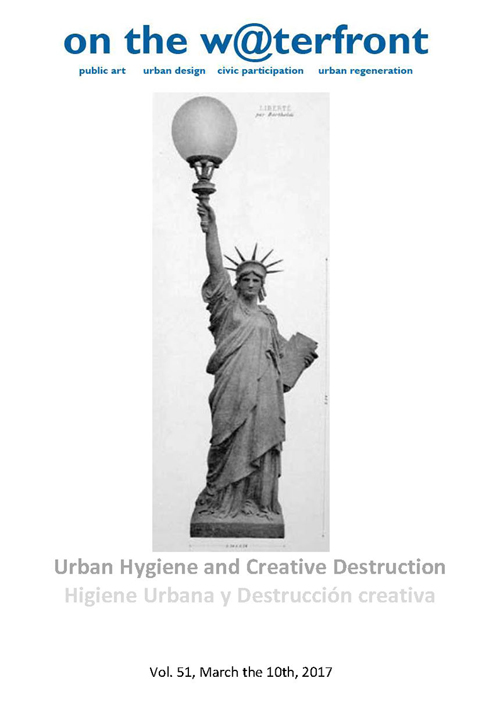The Eventrement of Paris and the configuration of the Alphand-Davioud- Hittorff Paradigm on urban design (p. 25-49)
Keywords:
París, Haussmann, Alphand, Davioud, Hittorff, Eventrement, Promenades, Urban DesignAbstract
In the first half of the 19th century and the Industrial Revolution, cities like Paris were faced with health problems brought upon them by the rapid growth of industries and the waves of immigration from rural areas. As a consequence the cities, especially their historic center, suffered from congestion, overpopulation and hygiene that lead to various epidemics. To improve hygiene conditions, measures were taken through major urban developments such as the transformation of Paris under the hands of Baron Haussmann the Prefect of the Seine Department between 1853 and 1870. In accordance with Napoleon III, Haussmann traced Paris’s new plan and started with the ‘eventrement’ of the city’s unhealthy neighborhoods by opening large rectilinear and longitudinal streets. In fact, he was continuing the work already proposed by Napoleon I and iniated later by Comte de Rambuteau in 1839 under the same concerns of hygiene. Haussmann’s objectives were to embellish and modernize the city, and foremost, to improve living conditions and public health, and provide all citizens with light, air, water, public parks and gardens. On one hand, he was able to assemble a distinguished team the likes of Alphand, Barillet-Deschamps, Davioud, and Hittorff who created and built the promenades and squares of Paris. Their designs and urban elements were standardized and systematized becoming an urban model and influencing the cities’ urban design. The fact that led Remesar to develop the ‘Alphand- Davioud- Hittorff paradigm’ where replicas of their style still predominates in shaping the landscape, spaces, and elements of our historic center. On the other hand, Haussmann received harsh criticism from political opponents that resulted in his dismissal. Due to the ‘eventrement’, he was criticized for destroying the old parts of the city causing a loss in historic and monumental buildings and neighborhoods. The new wide open streets and spaces made means of communication hard especially for pedestrians. In addtion, he was blamed for social disruption, inequality, and displacement caused by the amounts of demolitions and expropriations. Moreover, he was accused of squandering money over this long and costly procedure and over passing the budget. However, one cannot deny the fact that many defended him for all the promenades, parks, squares, gardens, and sewage system created without forgetting that these kinds of plans and procedures had already started before Haussmann dating back to the time of Napoleon I.Published
2017-03-20
How to Cite
el Haddad, Marie. 2017. “The Eventrement of Paris and the Configuration of the Alphand-Davioud- Hittorff Paradigm on Urban Design (p. 25-49)”. on the w@terfront. Public Art.Urban Design.Civic Participation.Urban Regeneration 51 (March):25-49. https://revistes.ub.edu/index.php/waterfront/article/view/18621.
Issue
Section
Articles
License
The
 licence allows: Share — copy and redistribute the material in any medium or format and Adapt — remix, transform, and build upon the material for any purpose, even commercially.The licensor cannot revoke these freedoms as long as you follow the license terms. Author's rights are protected by the ISSN 1139-7365. On the w@terfront has no restrictions respect the copyright by the authors and does allow authors to retain the publishing rights without restrictions.
licence allows: Share — copy and redistribute the material in any medium or format and Adapt — remix, transform, and build upon the material for any purpose, even commercially.The licensor cannot revoke these freedoms as long as you follow the license terms. Author's rights are protected by the ISSN 1139-7365. On the w@terfront has no restrictions respect the copyright by the authors and does allow authors to retain the publishing rights without restrictions.This journal does not apply any type of charge to the authors for the presentation or processing of the articles.







